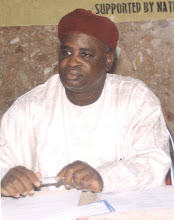ICT FOR LEARNING AND EDUCATION: BEYOND INFORMATION
Modern Information and Communication Technology is a revolution in human development. Including in learning and education. When I introduced ICT for teaching, learning and research four years ago, by now we have achieved a great deal with my students (see M.M. Yusif 2007). However, the revolutionary goal is not yet attained.
Today, I may say in confidence that we create a natural connection between particularly computers and our education. This is because whenever we talk of research and learning we often think about information from ICT. Computers enable us to store, access, retrieve, represent, transmit and manipulate information in many ways. Therefore, computers and education seem to make good partnership for us.
Our experience with usage of ICT as a source of information for learning and education has to continue for great exposure it gives to my students and making them independent learners and researchers.
Nevertheless, we have reached the peak of that phase, so we have to go forward in order to attain the revolutionary goal. This is necessary because the focus of computers only on information is limiting for learning and education. The rationale is that if we want take full advantage of new information and communication technologies, and if we are to become better thinkers and learners, we need to move beyond these information-centric ways of using the computer system.
Although, computers are wonderful instruments for accessing and transmitting information, but they are, more broadly, a new medium through which people can create and express. As such if we use computers only to deliver information, we would be missing the revolutionary potential of the new technology for transforming learning and education. In this context Mitchel observed that “computers can be seen as a universal construction material greatly expanding what people can create and what they can learn in the process”.
For our purpose in POL 4313; 3314; and 2204; we would be translating what we have learned in design form to offer new learning method and activities. This would be like a scientific simulations of an idea into creative things. Examples are
1. Creating a graphic design of ICT as an instrument of conflict resolution
2. To design any model to capture the environment and issues of any ethnic conflict
3. Robotics creation of imperialism
4. Robotics construction of globalisation against peasants; workers; middle class; etc.
5. A design to depict WTO mock summit
6. Resistance against globalisation; e.g. peasants chasing globalisation away
7. etc.; etc.; etc.;
Learning in this way, in addition to producing creative students would go a long way to making the students digitally fluent. This means that they use computer not only on how to use a word processor, how to send e-mail, how to look up information on the web, not only to chart. But to become digitally competent through design and creation of ideas
In order to facilitate this method of learning each seminar in all the course mentioned above are also named computer clubhouses. In 2005/2006 Academic Session, in the class of POL 4301 we form “Internet Partnership” and “Cyber-club” with intention of popularising the use of internet. It was a great achievement. Reports of the clubs were published in NAPSS Newsletter of that session.
The intention of the computer clubhouses is not simply to teach basic skills but to work together to create something i.e. translating any idea into creative symbol.
Each seminar or computer clubhouse is to give a report of what it has created by the end of the semester.
M.M. Yusif
June, 2007
Monday, 30 July 2007
Subscribe to:
Post Comments (Atom)

No comments:
Post a Comment
Note: only a member of this blog may post a comment.